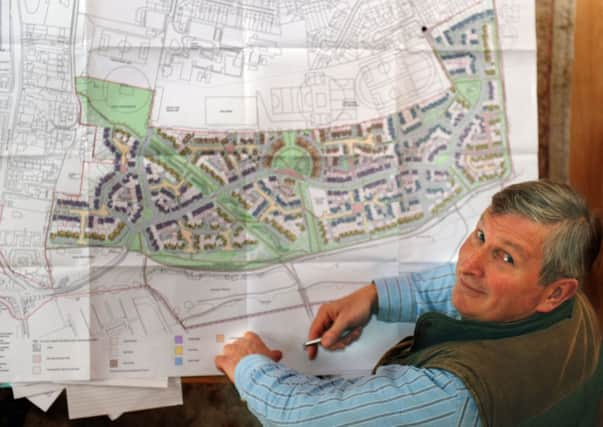‘Forgotten’ Yorkshire battle site at centre of courtroom fight


Archaeologist Charles “Chas” Jones is challenging a refusal by English Heritage to register Germany Beck at York as the site of the Battle of Fulford, known as “the first battle of 1066”.
The sometimes forgotten battle is of historical significance because it was part of a real-life Game of Thrones-style power struggle which culminated in the eventual defeat of Anglo-Saxon king Harold Godwinson by William of Normandy at the Battle of Hastings.
Advertisement
Hide AdAdvertisement
Hide AdMr Jones has carried out extensive research and argues Germany Beck was the most probable site.
It is also where Persimmon Homes has roused opposition by proposing to build 655 homes, which was granted permission in 2005 but which is still being opposed by parish councillors.
Mr Jones says he is not opposed to the housing plan but does object to a proposed access road which he claims will destroy a part of the battlefield.
The parish council is also seeking to overturn the planning permission through a judicial review application and is awaiting a decision.
Advertisement
Hide AdAdvertisement
Hide AdEnglish Heritage, which protects historical sites round the country, took advice from a Battlefield Advisory Panel and refused in November 2012 to designate the Fulford site on an official Battlefield Register.
English Heritage experts concluded that even though it was “probable” Germany Beck was the battlefield site the evidence was “insufficiently conclusive” to “securely identify” it for registration.
Ian Dove QC, for Mr Jones, argued at London’s High Court yesterday that the decision cannot stand because the decision makers failed to apply the correct “location” test.
That involved consideration of whether there was evidence that a battle had occurred in a particular location “with a fair degree of probability”.
Advertisement
Hide AdAdvertisement
Hide AdThe QC told Mr Justice Lindblom the test was contained in the Battlefield Designation Selection Guide: the only up-to-date statement of English Heritage’s designation policy.
Mr Dove said it was uncontroversial that “absolute proof for the boundaries of a battle” was rarely possible.
Referring to English Heritage, he said: “If they did not apply the ‘fair degree of probability’ test to the question of location then inarguably they erred in law in the decision they reached.”
Mr Justice Lindblom last night reserved judgement in the case.
Advertisement
Hide AdAdvertisement
Hide AdHistorians say the Battle of Fulford was the first of three battles which decided whether a Viking, Anglo-Saxon or Norman sat on the English throne and was a watershed in modern British history.
At the Fulford battle, a Viking army defeated an Anglo-Saxon force led by northern earls Edwin and Morcar.
The defeat forced Saxon King Harold, who was already facing a threat from William of Normandy, to march his army north and he defeated the Viking invaders at the Battle of Stamford Bridge five days later.
After his victory, Harold had to march his battered army swiftly south again to take on William.
Advertisement
Hide AdAdvertisement
Hide AdThree weeks later Harold was defeated at the Battle of Hastings, resulting in 1066 being a date generations of schoolchildren could forever remember.
The events of early English history England provided much of the inspiration for the series of novels by George Martin, which are currently being dramatised in the hit TV show Game of Thrones, starring Yorkshire actor Sean Bean.